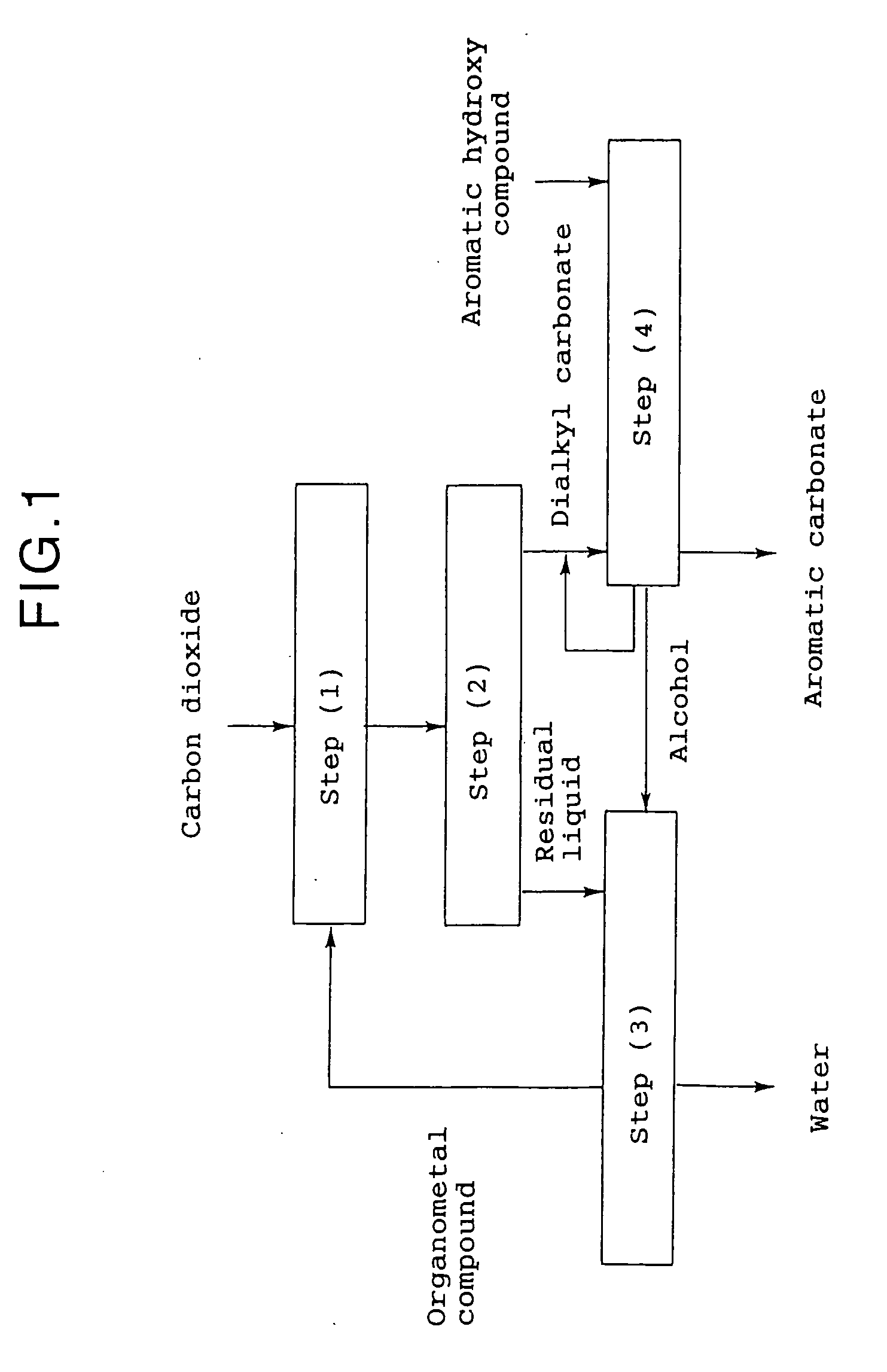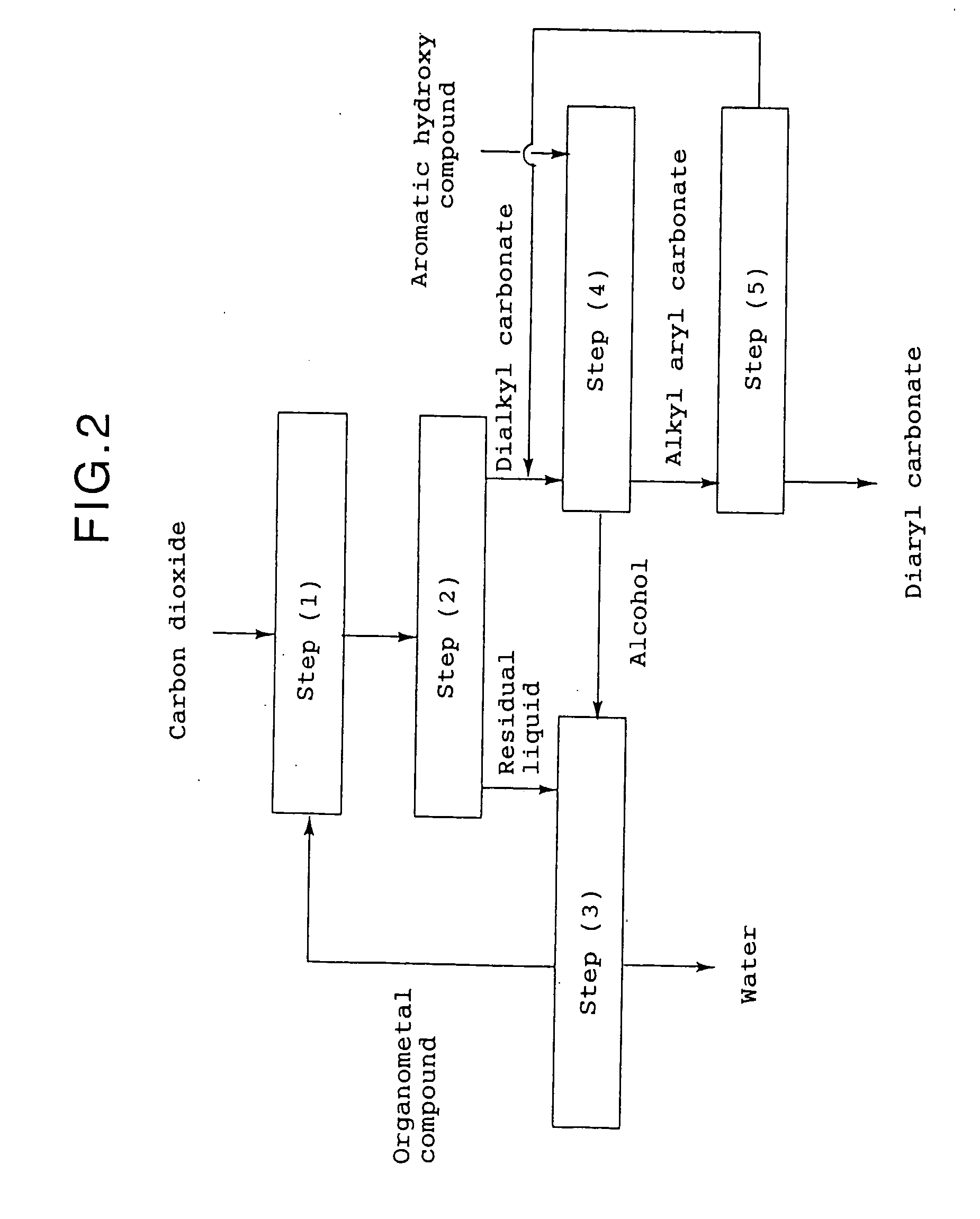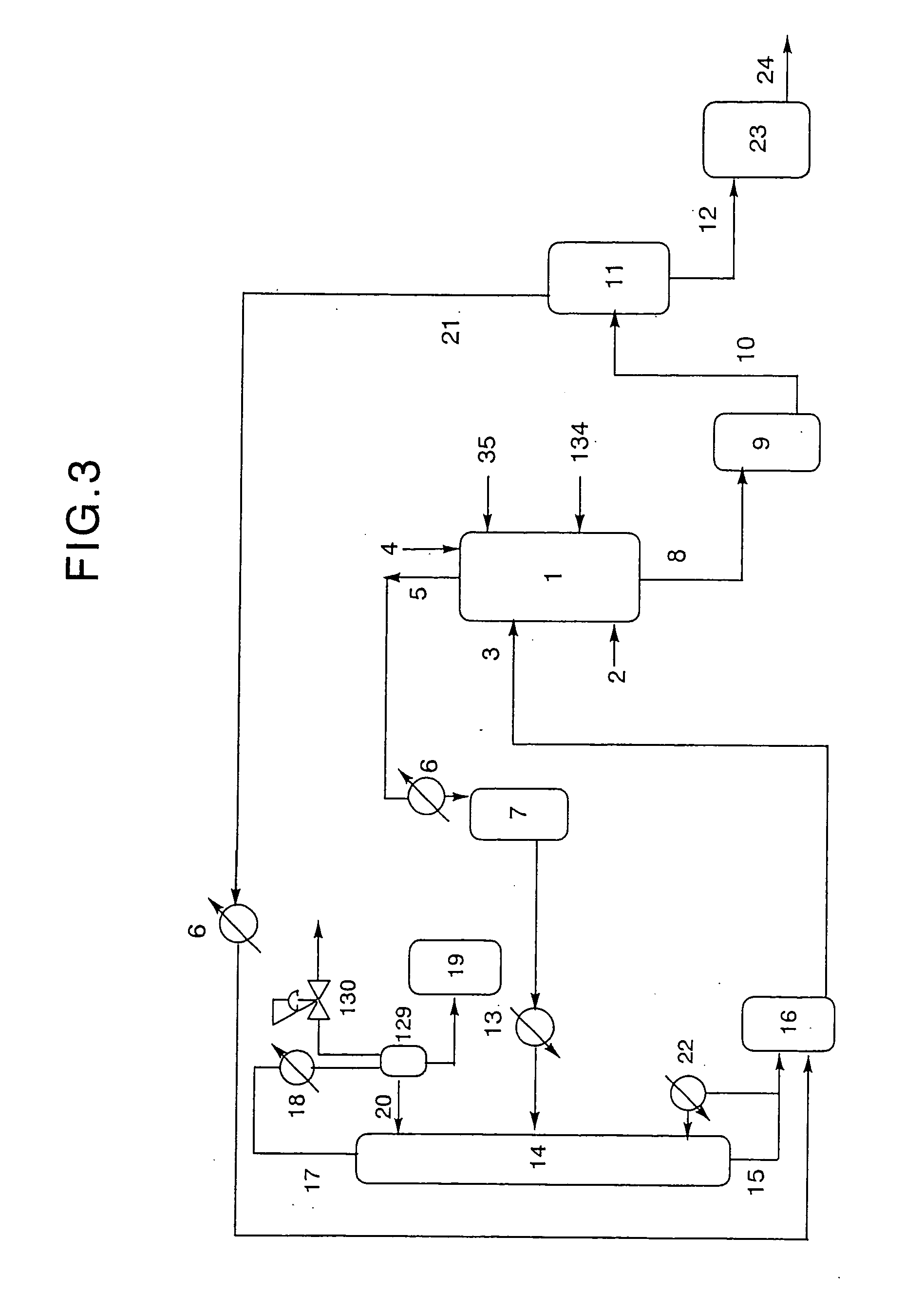Method for producing an aromatic carbonate
a technology of aromatic carbonate and carbonate, which is applied in the field of aromatic carbonate production, can solve the problems of high maintenance cost of production equipment, difficulty in waste disposal and the like, and the use of dichloromethane has been attracting attention, and achieves simple and efficient production and high purity
- Summary
- Abstract
- Description
- Claims
- Application Information
AI Technical Summary
Benefits of technology
Problems solved by technology
Method used
Image
Examples
example 1
(Production of Dibutyltin Dialkoxide)
[0451] Using a device as shown in FIG. 3, dibutyltin dialkoxides were produced as follows.
[0452] Into a 5-liter SUS reaction vessel 1 equipped with a stirrer, a heater and a baffle were charged 75 g (0.3 mol) of dibutyltin oxide and 2,224 g (30 mol) of 1-butanol (manufactured and sold by Aldrich, U.S.A.), wherein dibutyltin oxide was fed through conduit 4 provided at the top of reaction vessel 1, and 1-butanol was fed from alcohol reservoir 16 through conduit 3 provided at an upper portion of reaction vessel 1. Further, nitrogen gas was fed to reaction vessel 1 through a SUS tube connected to inert gas conduit 2 provided at a lower portion of reaction vessel 1 at a rate of 0.1 Nl / hr.
[0453] Subsequently, the contents of reaction vessel 1 were heated while stirring, so as to adjust the temperature thereof within the range of from 113° C. to the boiling point of 1-butanol, thereby performing a reaction for about 6 hours while discharging the low...
example 2
(Production of Dibutyltin Dialkoxide)
[0485] Using a device as shown in FIG. 3, dibutyltin dialkoxides were produced as follows.
[0486] Into a 5-liter SUS reaction vessel 1 equipped with a stirrer, a heater and a baffle were charged 75 g (0.3 mol) of dibutyltin oxide and 2,224 g (30 mol) of 1-butanol (manufactured and sold by Aldrich, U.S.A.), wherein dibutyltin oxide was fed through conduit 4 provided at the top of reaction vessel 1, and 1-butanol was fed from alcohol reservoir 16 through conduit 3 provided at an upper portion of reaction vessel 1. Further, nitrogen gas was fed to reaction vessel 1 through a SUS tube connected to inert gas conduit 2 provided at a lower portion of reaction vessel 1 at a rate of 0.1 Nl / hr.
[0487] Subsequently, the contents of reaction vessel 1 were heated while stirring, so as to adjust the temperature thereof within the range of from 113° C. to the boiling point of 1-butanol, thereby performing a reaction for about 6 hours while discharging low boi...
example 3
(Production of Dibutyltin Dialkoxide)
[0516] Using a device as shown in FIG. 3, dibutyltin dialkoxides were produced as follows.
[0517] Into a 5-liter SUS reaction vessel 1 equipped with a stirrer, a heater and a baffle were charged 75 g (0.3 mol) of dibutyltin oxide and 2,075 g (28 mol) of 1-butanol (manufactured and sold by Aldrich, U.S.A.), wherein dibutyltin oxide was fed through conduit 4 provided at the top of reaction vessel 1, and 1-butanol was fed from alcohol reservoir 16 through conduit 3 provided at an upper portion of reaction vessel 1. Further, nitrogen gas was fed to reaction vessel 1 through a SUS tube connected to inert gas conduit 2 provided at a lower portion of reaction vessel 1 at a rate of 0.1 Nl / hr.
[0518] Subsequently, the contents of reaction vessel 1 were heated while stirring, so as to adjust the temperature thereof within the range of from 113° C. to the boiling point of 1-butanol, thereby performing a reaction for about 6 hours while discharging low boi...
PUM
| Property | Measurement | Unit |
|---|---|---|
| Temperature | aaaaa | aaaaa |
| Temperature | aaaaa | aaaaa |
| Fraction | aaaaa | aaaaa |
Abstract
Description
Claims
Application Information
 Login to View More
Login to View More - R&D
- Intellectual Property
- Life Sciences
- Materials
- Tech Scout
- Unparalleled Data Quality
- Higher Quality Content
- 60% Fewer Hallucinations
Browse by: Latest US Patents, China's latest patents, Technical Efficacy Thesaurus, Application Domain, Technology Topic, Popular Technical Reports.
© 2025 PatSnap. All rights reserved.Legal|Privacy policy|Modern Slavery Act Transparency Statement|Sitemap|About US| Contact US: help@patsnap.com



